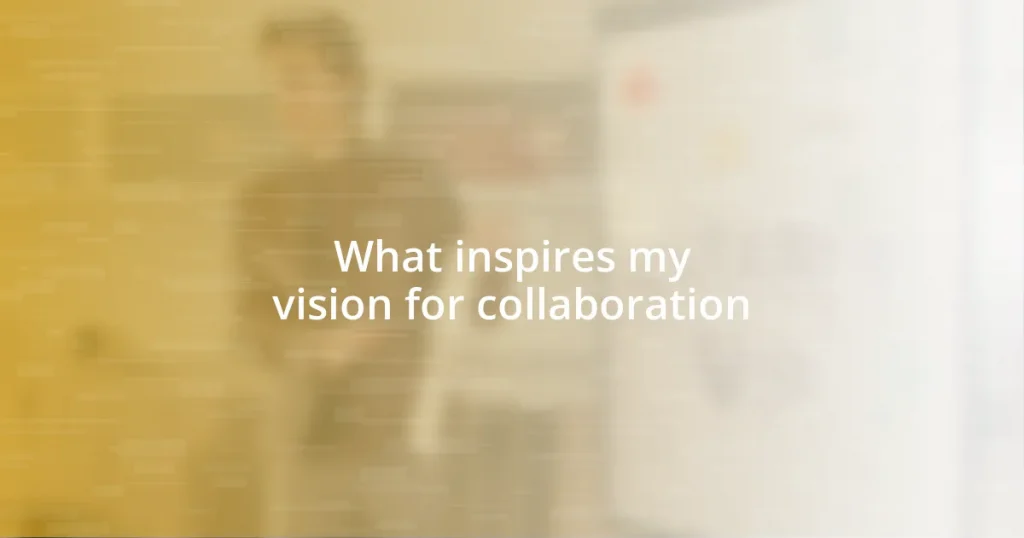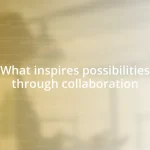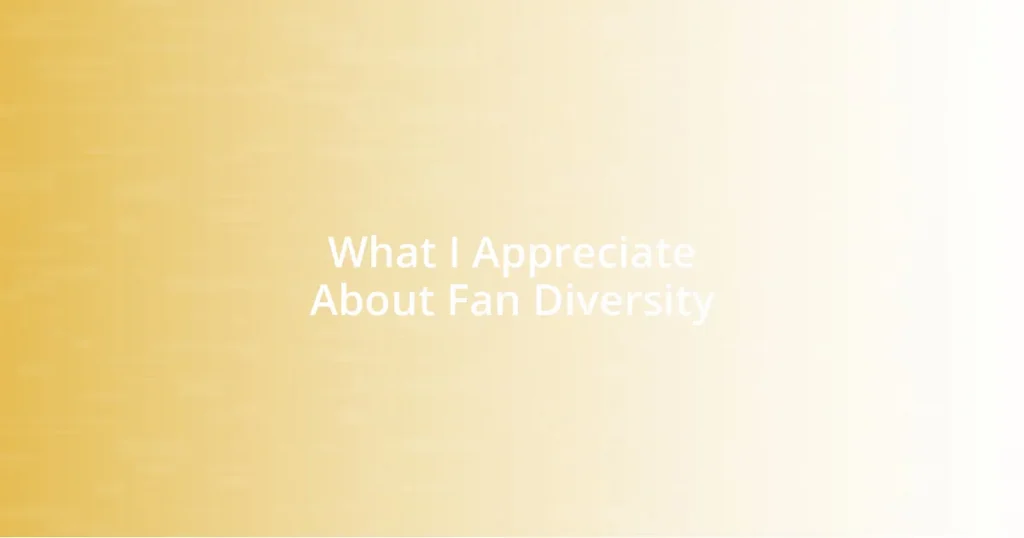Key takeaways:
- Effective collaboration thrives on trust, open communication, and vulnerability, fostering deeper team connections.
- Identifying personal motivations, such as values and goals, enhances engagement and collective effort in teamwork.
- Shared values unify teams, simplifying decision-making and boosting motivation through a common purpose.
- Leveraging diverse perspectives enriches collaboration, driving innovative solutions and fostering empathy among team members.

Understanding collaboration concepts
Collaboration is more than just working together; it’s about creating a shared vision and leveraging diverse strengths. I remember a project where our team faced a tight deadline. Initially, we struggled to align our ideas. But when we took a moment to listen to each other’s perspectives, our approach transformed dramatically. What if we approached every collaboration that way, prioritizing understanding before action?
At its core, effective collaboration hinges on trust and open communication. I’ve learned that building trust doesn’t happen overnight; it’s forged through consistent interactions and vulnerability. When I shared my own challenges during team meetings, it encouraged others to do the same. This vulnerability opened the door to deeper connections. Have you ever noticed how a simple act of sharing can transform the dynamics of a group?
Finally, defining clear roles can empower teams to shine. I once worked in a group where roles were ambiguous, leading to frustrating overlap and confusion. It wasn’t until we clearly outlined who was responsible for what that we began to see progress. Isn’t it fascinating how clarity can lead to breakthrough moments in collaboration? Through these experiences, I’ve come to appreciate the intricate dance of understanding and support that defines successful teamwork.
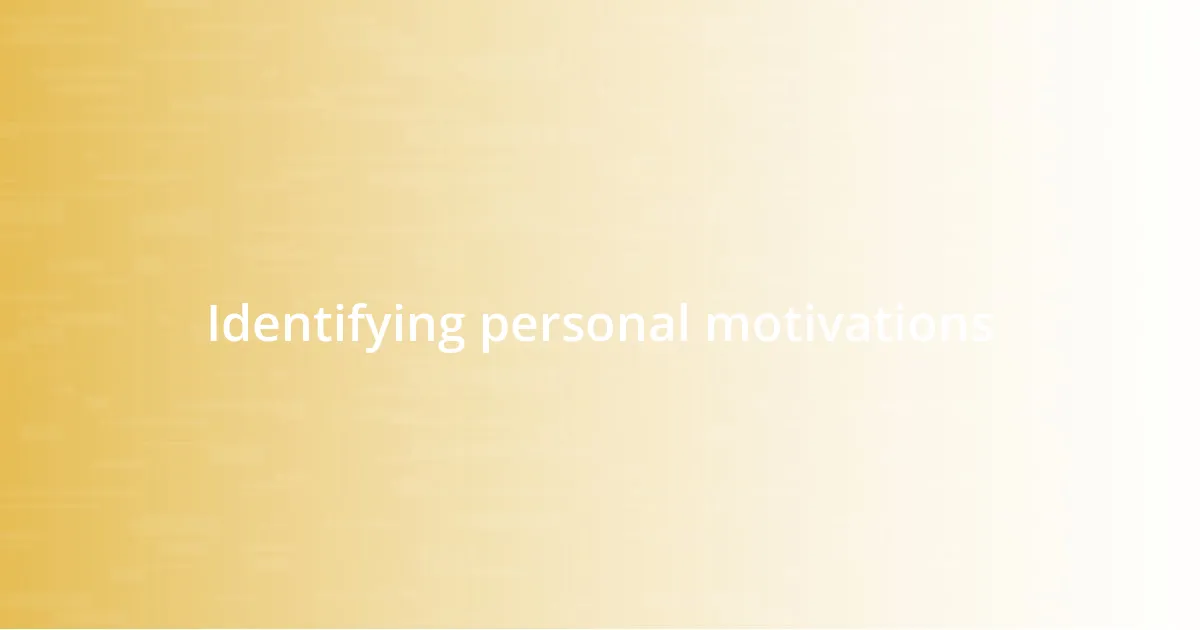
Identifying personal motivations
Identifying personal motivations is essential for fostering meaningful collaboration. I often find that my passion for community building drives my engagement with others. For instance, there was a time when I joined a volunteer project focused on local outreach. That experience not only reignited my commitment to my community but also highlighted how shared values can be a powerful motivator for collective effort. It’s crucial to recognize what personally inspires us, as it can enhance the collaborative spirit.
To streamline this process, I suggest reflecting on the following motivations:
- Values: What beliefs and principles guide my actions?
- Goals: What do I aim to achieve through collaboration?
- Interests: What activities or topics excite me to engage with others?
- Impact: How do I wish to contribute to a larger cause or community?
- Connection: What relationships do I want to nurture or build through teamwork?
By digging into these areas, I find it becomes much clearer why I collaborate and how I can inspire others along the way.

The role of shared values
Shared values are the glue that binds teams together, forming a common thread in the fabric of collaboration. I recall working on a project with a diverse group, coming from different backgrounds and perspectives. Initially, it felt like we were all speaking different languages. However, when we identified our shared commitment to innovation and community impact, the atmosphere shifted. Suddenly, our individual differences became strengths rather than barriers. Have you ever felt that moment when everyone is on the same page? It’s electrifying!
Moreover, aligning on values can aid decision-making. In my experience, when team members understand the “why” behind a project, they’re more motivated to contribute. I remember a time when our team faced a tough choice regarding resource allocation. Because we had clearly stated our values – prioritizing sustainability and community welfare – the decision became more straightforward. It energized our efforts and united us in purpose. When values drive our actions, collaboration blooms.
To illustrate the influence of shared values, I find it helpful to consider the contrasts between teams that operate with or without them. Notice how the foundation of agreement on essential values can pave the way for cohesive teamwork and trust.
| With Shared Values | Without Shared Values |
|---|---|
| Stronger Team Cohesion | Frequent Misunderstandings |
| Efficient Decision-Making | Prolonged Conflicts |
| Increased Trust | Low Engagement |
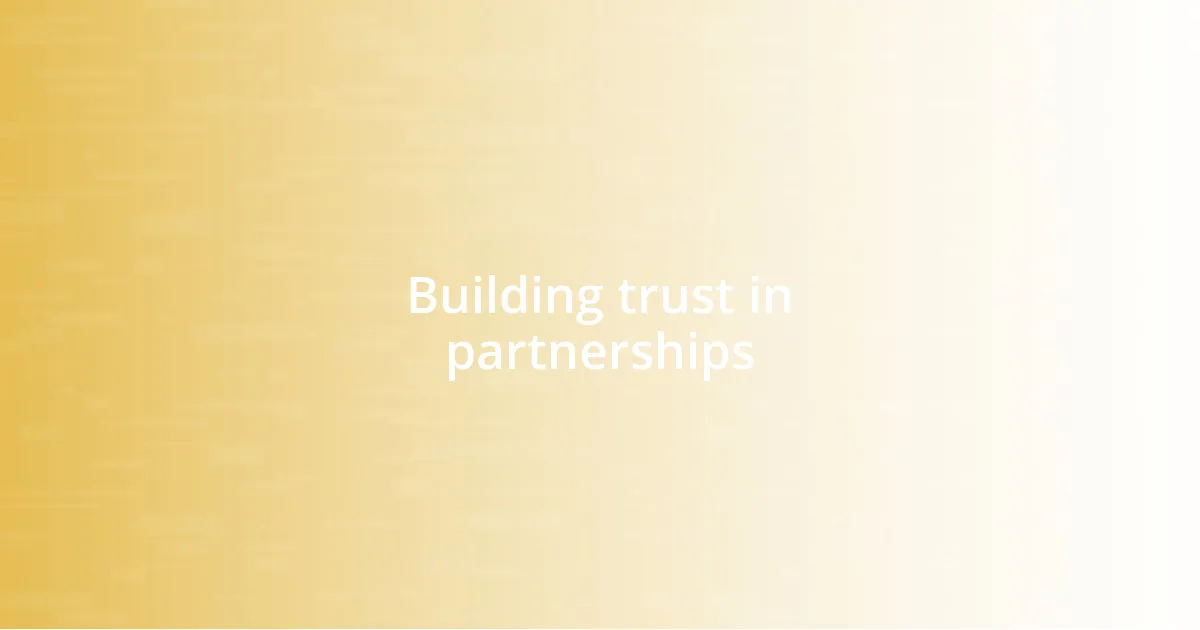
Building trust in partnerships
Building trust in partnerships requires open communication and a commitment to transparency. I once worked alongside a colleague who had every reason to keep his ideas to himself; after all, we were competing for funding. Yet, he chose to share his insights freely instead. That experience taught me how vulnerability can be a catalyst for trust. Have you ever thought about how sharing your uncertainties might deepen your connections?
Trust also flourishes when we acknowledge each other’s strengths and weaknesses. I remember a project where we were all assigned roles based on our individual skills. We openly discussed our apprehensions and the gaps we saw in our capabilities. This brave honesty not only built trust but also helped us develop a mutual respect for one another. It’s amazing how recognizing our human vulnerabilities can be the foundation for stronger partnerships.
Moreover, consistency plays a crucial role in establishing trust over time. I’ve learned that following through on promises and being dependable creates a safe space where collaboration can thrive. In a recent initiative, I made it a point to keep my teammates updated regularly. This commitment not only enhanced our teamwork but also fostered a sense of reliability. Wouldn’t you agree that when partners feel secure in each other’s actions, they’re more likely to take bold steps together?
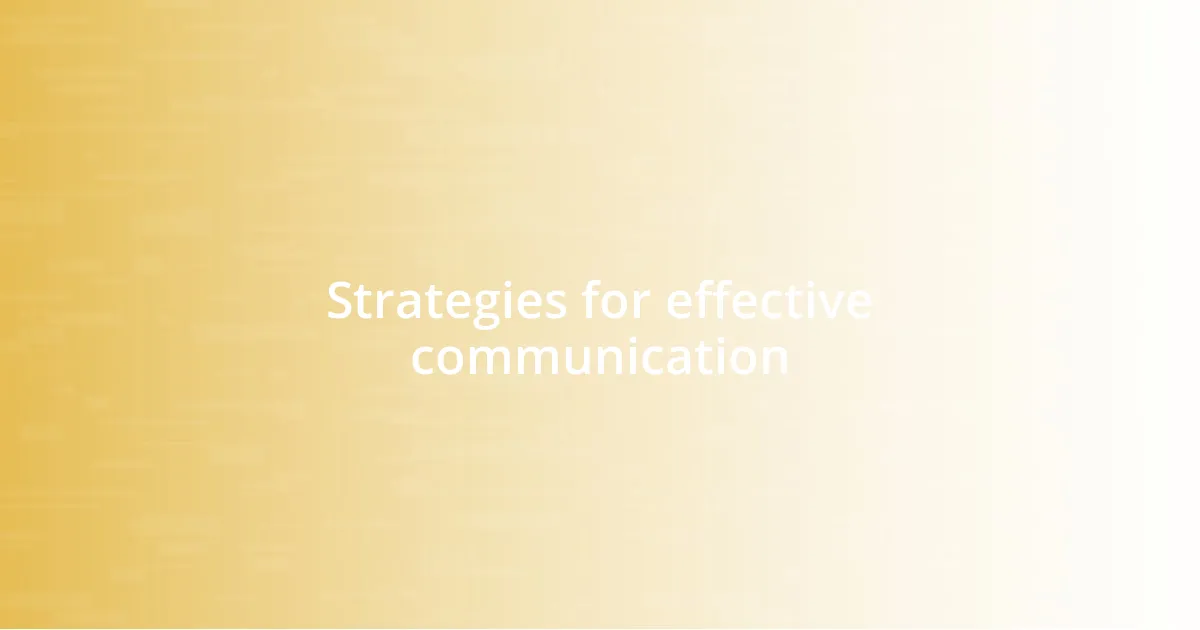
Strategies for effective communication
Effective communication is the cornerstone of successful collaboration. I vividly remember a team meeting where one member hesitantly shared an idea, and, surprisingly, it sparked a lively discussion. This taught me that creating an environment where everyone feels safe to express their thoughts leads to richer, more innovative solutions. Have you ever experienced that moment when a single voice can change the trajectory of a conversation?
Utilizing active listening is another powerful strategy I’ve found to be invaluable. In one instance, a colleague shared a concern about our project timeline, and instead of brushing it off, I took the time to listen intently. This not only validated her feelings but also opened avenues for us to brainstorm alternatives. Isn’t it remarkable how simply listening can transform uncertainty into collaboration?
Additionally, incorporating technology tools can streamline communication, especially in remote settings. I recall a project where we used digital platforms to ensure everyone stayed in the loop, allowing for real-time updates and feedback. This approach minimized misunderstandings and kept the momentum going. Isn’t it interesting how a little tech can bridge physical gaps between us?

Leveraging diverse perspectives
Leveraging diverse perspectives is pivotal to enriching collaboration. I once participated in a brainstorming session where team members hailed from different cultural backgrounds. The variety of viewpoints transformed our ideas; what started as a simple project evolved into a comprehensive initiative that embraced creativity. Have you ever witnessed a single conversation ignite innovation simply because of its diverse contributors?
One striking moment came when a team member suggested a solution, grounded in her unique experience in another industry. Initially, I was skeptical. However, her fresh take not only resolved a lingering issue but also inspired others to share their unconventional ideas. It’s fascinating how embracing diversity can unveil unexpected solutions, isn’t it?
Moreover, I’ve seen that diverse perspectives promote empathy and understanding within a team. In a recent project, a colleague took the time to explain her reasoning behind a particular approach, and suddenly, the entire team was resonating with it. I realized that diversity isn’t just about variety; it’s about listening and learning from one another. Isn’t it empowering to think that every voice can add depth to our collaborations?

Enhancing collaboration outcomes
Enhancing collaboration outcomes requires a focus on clarity and shared goals. I remember a project kickoff where we collectively defined our vision and objectives. This alignment did wonders; it turned individuals into a unified team. Have you ever felt how clarity can transform a group of people into something greater than the sum of its parts?
Another key aspect is fostering a culture of trust. In one scenario, I noticed that when team members openly shared their vulnerabilities, it inspired others to do the same. The result? A more honest and productive dialogue. Isn’t it interesting how showing our human sides can strengthen professional bonds?
Furthermore, continuous feedback loops can dramatically enhance collaboration outcomes. I recall a time when our group implemented regular check-ins after every major task. It was refreshing to measure progress and recalibrate our strategies in real-time. This not only uplifted morale but also improved our efficiency, proving how accountability can be a powerful motivator. Don’t you agree that consistent feedback cultivates a stronger team ethos?










